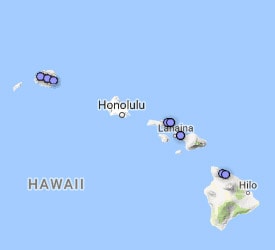World 🢖 Australia and Oceania 🢖 Polynesia 🢖 United States 🢖 Hawaii 🢖 Kaua’i
Waterfalls 🢔 Geological wonders 🢔 Categories of wonders
Wonder
Wai’ale’ale Falls (Waialeale Falls, Weeping Wall)
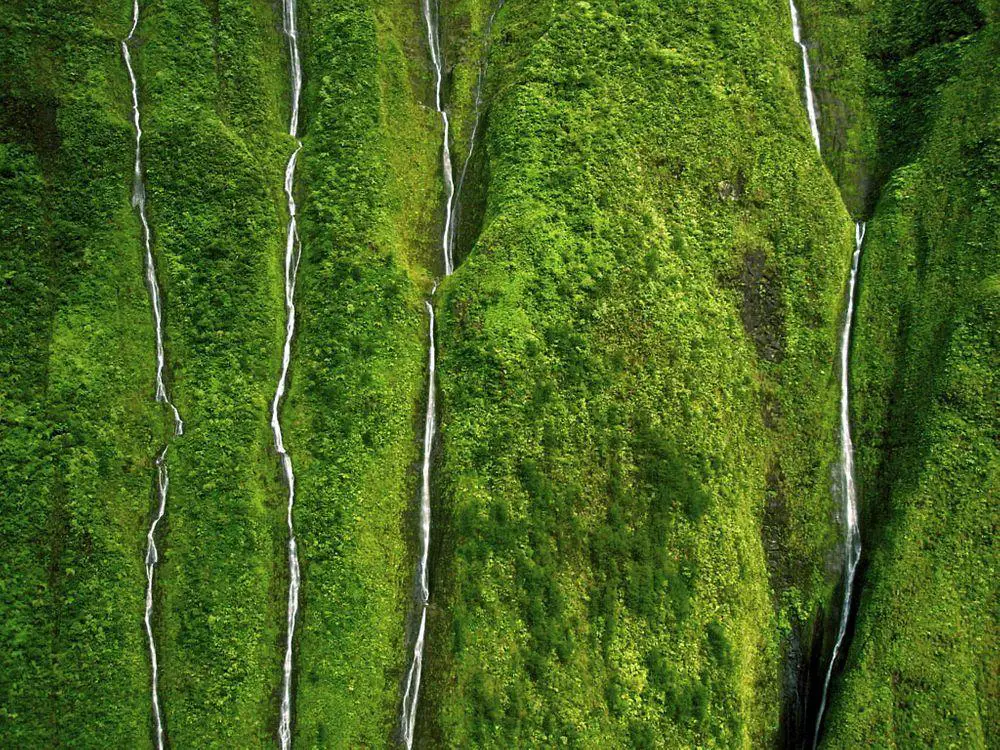
 In short
In short
Summit of the 1,544 m high Wai’ale’ale volcano belongs to the rainiest places of the world – here fall some 10,800 mm of rain per year. More than 10 meters! No wonder that the volcano is covered with bright green jungle and adorned with many waterfalls. Especially impressive is the dramatic box canyon to the east with the numerous beautiful Waialeale Falls.
 42.8%
42.8%
GPS coordinates
Location, address
Alternate names
Height
Map of the site
If you see this after your page is loaded completely, leafletJS files are missing.
 In detail
In detail
Wai’ale’ale ("rippling waters") volcano has been dormant for millions of years. Natural forces have reshaped the mountain – water has eaten away and ridged the hard rock. Constant rain and tropical climate have encased the rugged cliffs in the emerald blanket of the tropical jungle.
The giant box canyon to the east from the summit often is called "Blue Hole" – it also has been washed out by the abundant rain.
The height of the steep, nearly vertical walls of this unbelievable monument of nature exceeds 900 m.
Contrary to many written sources, "Blue Hole" is not a crater of the volcano.
Land of mist
Nearly all the time the summit of Wai’ale’ale is hidden in the cloud – locals say that the summit is visible only some 20 days per year.
Kaua’i island is located in latitudes where the air blown from the ocean is full of mist. Summits of this island are not too low and not too high – thus masses of air are not diverted by the mountains. The air is blown up along the steep walls and the moisture remains on the cliffs. An especially efficient trap of the mist is "Blue Hole".
Falls
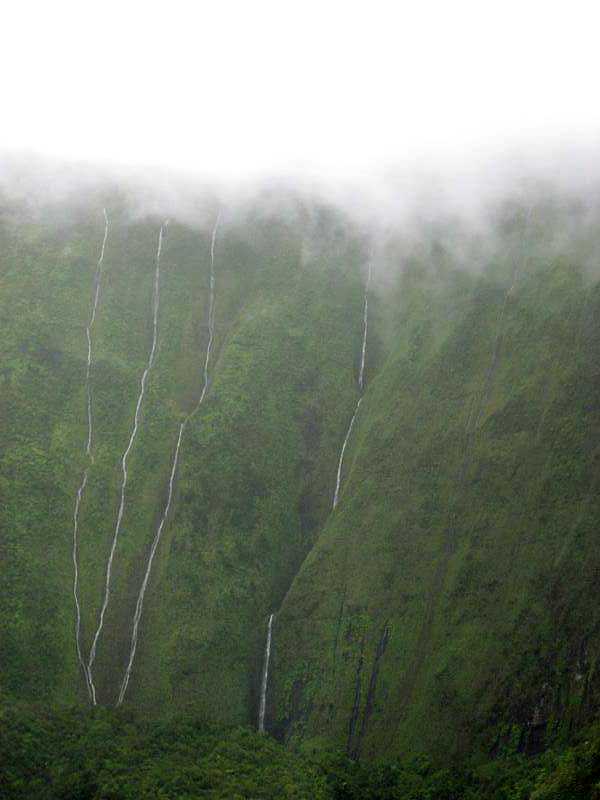
True number and the exact height of falls in “Blue Hole” is not known. The number of falls is changing according to the weather – when there is rain, there are more falls, and when less – fewer falls. It is possible that nobody has tried to measure the height of each of these falls – although contemporary technologies like LIDAR could do the work perfectly. The height difference between the rim of the canyon and the stream below is up to 910 – 920 m. Thus we can assume that Wai’ale’ale falls may reach heights up to 900 m. But note – water does not fall with a single plunge here – waterfalls flow down along very steep cliffs with occasional plunges.
Deep inside the canyon, further to the south there is a large vertical cliff, too steep to sustain vegetation. This is Weeping Wall, always covered with countless streams of smaller waterfalls.
Most tourists enjoy the incredible sights of the “Blue Hole” through the window of a helicopter – the sound of waterfalls in the canyon is beaten by the buzz of helicopters many times per day. The majority of helicopters though do not enter inside the canyon – winds here can be rough.
Canyon could be reached after a strenuous walk as well. The walls of the canyon are extremely hard to climb and most likely nobody has done it yet.
Wai’ale’ale Falls is included in the following article:
 Linked articles
Linked articles
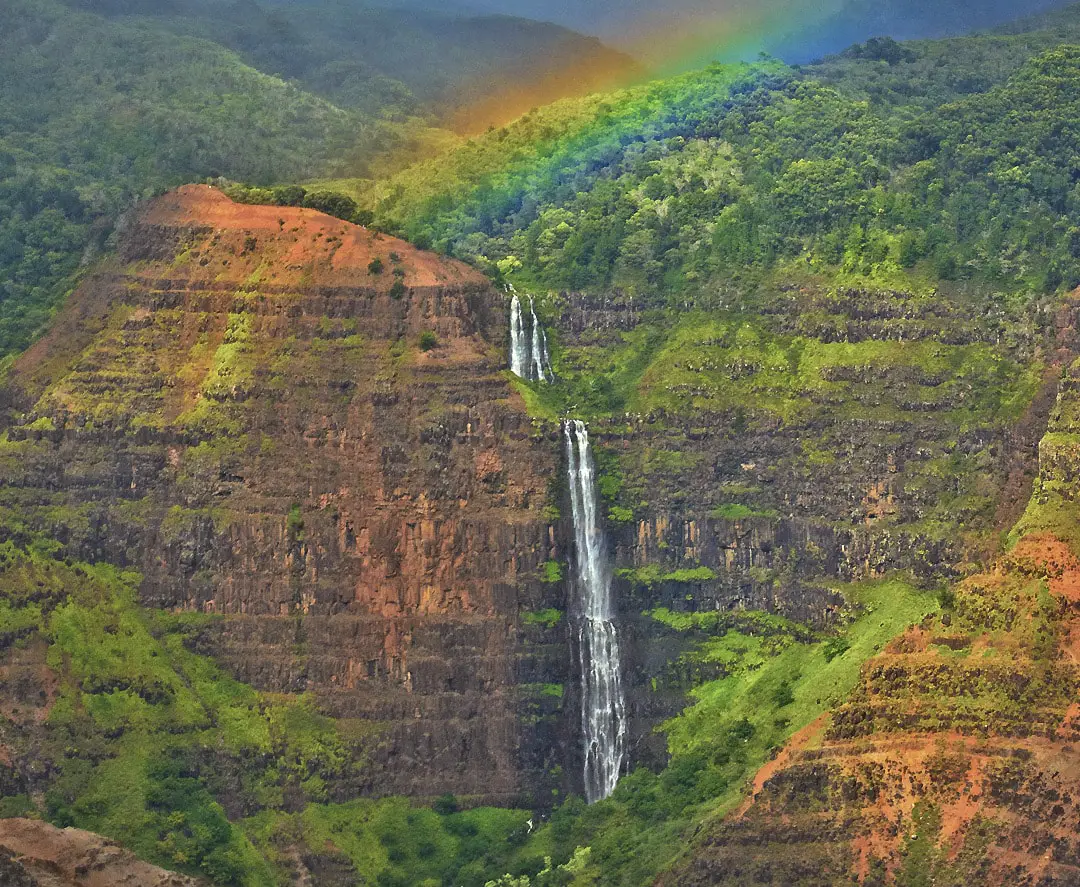
Wonders of Hawaii
The Hawaiian Islands belong to the most remote islands in the world. Hawaii is characterized by a tropical climate, mountainous relief, volcanism, and isolation. If compared to most islands in the Pacific, several Hawaiian Islands have comparatively large landmasses. All these factors have led to the development of numerous impressive and unique natural attractions and some impressive monuments of culture.
numerous impressive and unique natural attractions and some impressive monuments of culture.
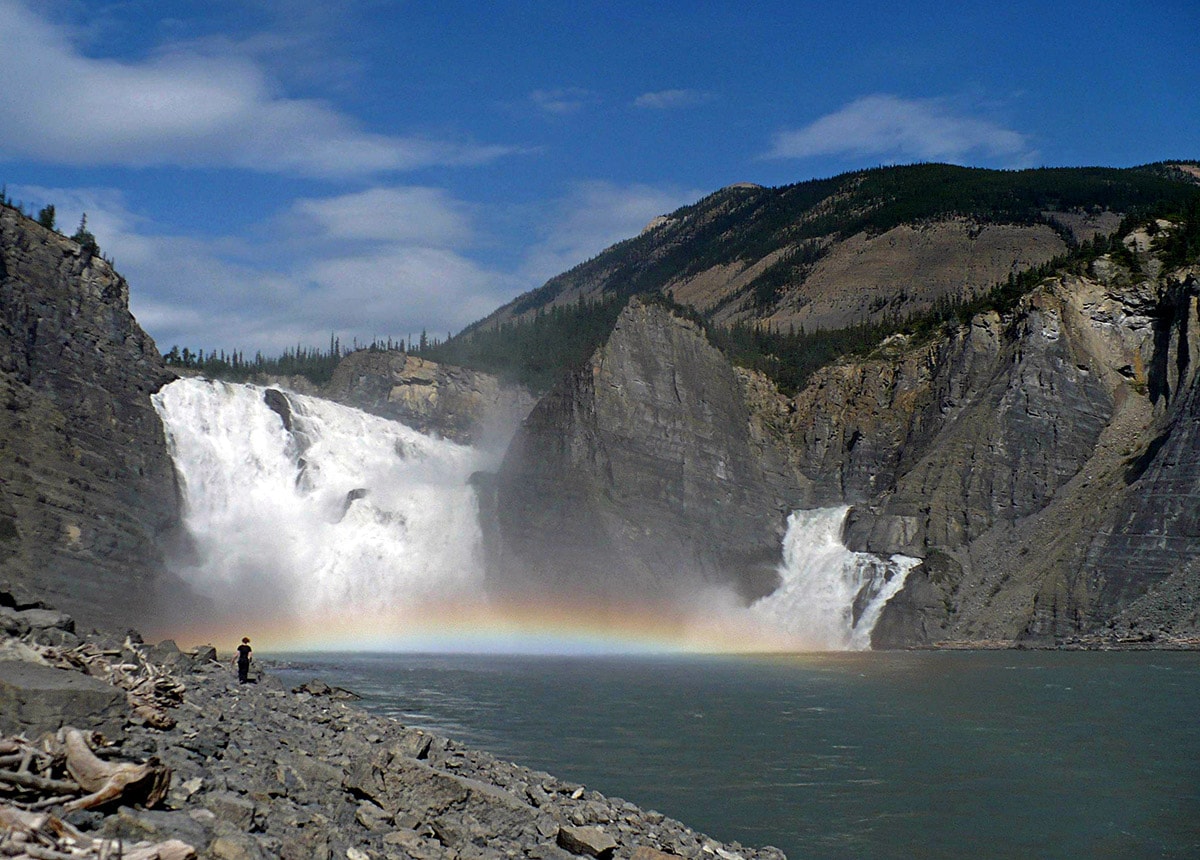
Waterfalls
Some of the most fascinating and awe-inspiring natural monuments are waterfalls or locations where a river abruptly changes its elevation.
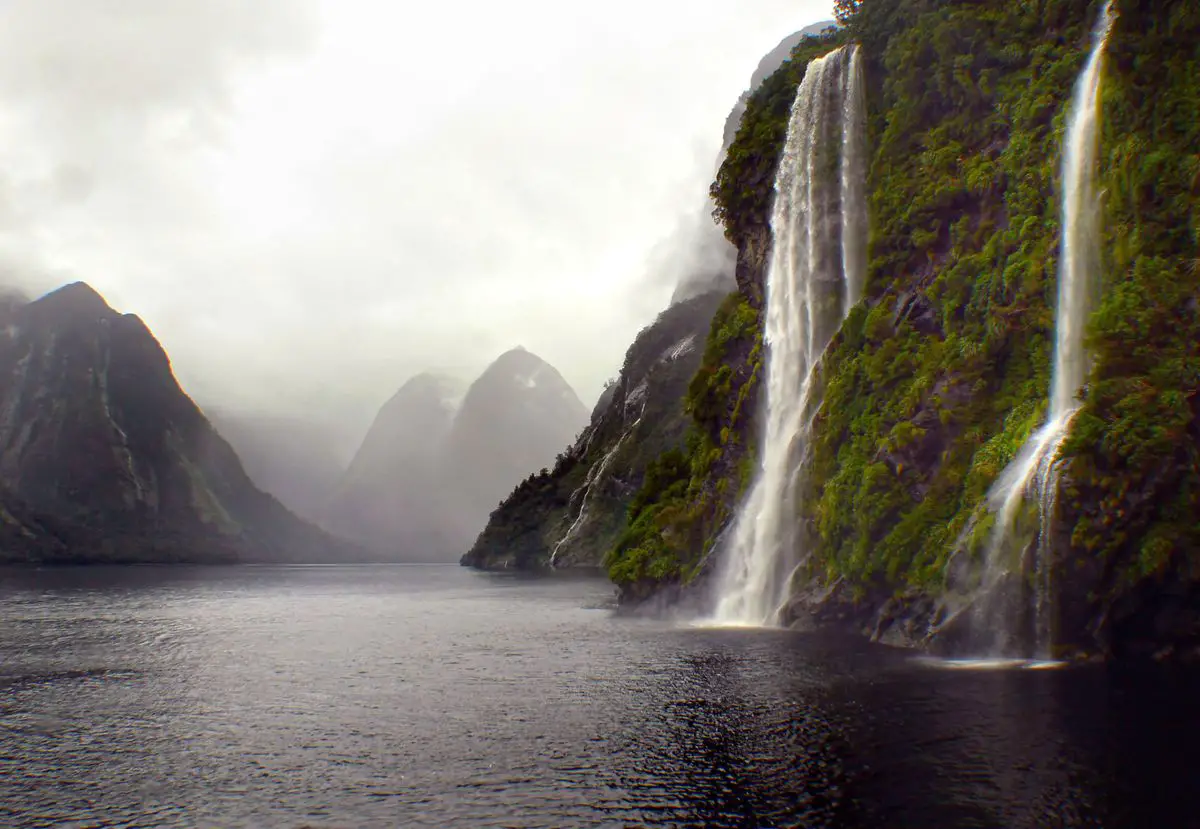
Wonders of Polynesia
Although the landmass of Polynesia is small, the charm and special beauty of this region are some of the most impressive on our planet. These islands are endowed with lush and beautiful nature, with warm oceans and friendly people representing a distinct culture. Polynesia is very rich in both natural and cultural landmarks and many of them are unique.
 Recommended books
Recommended books
Ancient Sites of Maui, Molokai and Lanai
This informative and easy-to-follow guidebook makes the ancient sites of Maui, Molokai, and Lanai available to the general public for the first time. Grouping the sites by location, the book characterizes the cultural background of five main types of sites: heiau (temples), pohaku (sacred stones), petroglyphs, caves, and fishponds.

